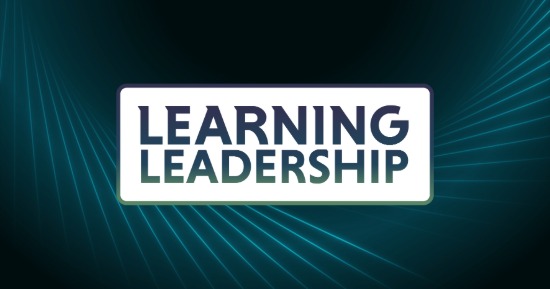Spoiler alert—this article will endwith a call to action, asking for your help to explore a crucial issue thatwill empower L&D professionals to deliver real value: learning agility,learning to learn and unlearn at speed.
But first, here’s a quote aboutfish.
“In the new world, it is not the big fish which eats thesmall fish, it’s the fast fish which eats the slow fish.”
—Klaus Schwab
As executive chairperson of theWorld Economic Forum, Schwab is helping to popularize our understanding of the fourth industrial revolution—anera of rapid change where advances in technology are disrupting the way we workand live.
It’ll be a while before the dustsettles on the impact of AI, the rise of the “gig economy,” and the influenceof cryptocurrencies, but it’s hard to deny that we’re experiencing continuedand accelerated change.
Automation has already taken over many repetitive,simple tasks, demanding that people climb Bloom’s Taxonomy and embrace higherorder thinking and complex skills. You’ve probably seen countless “top skillsfor the future” lists. Here’s another (Figure 1):
Figure 1: These are the skills that are most needed aswork evolves to demand higher order thinking.
This understanding has guided myprofessional direction for some time, leading me to identify three key areas ofcapability:
● Design thinking, which encompasses empathy, collaboration and problemsolving
● Learning agility, which, as noted above, is essentially learning to learnand unlearn at speed
● Leveragingdigitally driven performance data,including xAPI
For now, I’ll focus on learningagility.
Learning agility
This conversation harks back to theground-breaking work by Peter Senge around “learning organizations” during the 1990s, although the increased pressure of speed is acrucial development that has seen renewed interest in “agility” come to thefore.
Here is an extended definition:
Learning agility is the ability to continually and rapidly learn,unlearn, and relearn mental models and practices from a variety of experiences,people, and sources, and to apply that learning in new and changing contexts toachieve desired results.
In terms of how to achieve this, I’m influencedby Kolb’s experiential learning cycle and would argue that learning agility is achieved through a continuous,rapid, and dynamic flow between reflection and experience, which I’ve capturedin Figure 2.
Figure 2: How learningagility emerges through reflection and experience.
In reality, this is never a simple progressivecycle; it’s a messy and unpredictable process that leaps from point to point.In addition, learning agility can and must play out at multiple levels, forindividuals, teams, and organizations. Finally, it’s a process that can beimproved.
A reality check and opportunity for L&D
That last point is particularly relevant forL&D professionals. While traditionally our industry has focused ondelivering “event-based training,” this brave new world is calling—evendemanding—for us to improve and expand our offerings. Just as other industriesare transforming, L&D professionals must become experts in enabling rather than training. This involves designing learning ecosystems and using a range of strategies to support these dynamic cycles of experience and reflection.
In my opinion, that means we must explore,master, and champion learning agility.
Learning agility for individuals
Until recently, I’ve focused much of myattention on how an individual (rather than organization) can become apowerful, agile learner.
Practicing what I preach, I’ve spent countlesshours studying agile learners (especially gamers and developers), as well asreading, experimenting, and working out loud around this topic.
My research culminated in the launch of the Learn2Learn app, which explores18 key topics to empower individuals with learning agility. These include howto:
● Learn and unlearn a diverse rangeof mental models for creative problem solving;
● Use feedback to improve cycles ofdeliberate practice;
● Use performance support to lower cognitiveload;
● Reflect and make sense of complexinformation and experiences; and
● Fail faster, withprototyping and root cause analysis to learn more from failure.
I’ve captured and chunked these topics in aninfographic (Figure 3):
Figure 3: Key practices that develop and support learningagility.
Although I have given you a quick taste of howindividuals can develop learning agility, that’s not what I intend to focus on here. After all, there’s an app forthat. What I’m particularly interested in exploring is how this plays out at anorganizational level.
Learning agility for organizations
In today’s era of accelerated change thebillion-dollar question is: How canorganizations enable and harness learning agility to better meet their goals?
With the drive to meet customer needs moredeeply and rapidly, the answer to the above question represents the ultimatecompetitive advantage. Solving it will enable organizations to rapidly adapt,innovate, and even lead disruption.
In other words, as the fourth industrialrevolution continues to unfold, learning agility will be the difference betweenan organization thriving or disappearing.
So how do we enable learning agility inorganizations? Figure 4 represents some of my work in progress.
Figure 4: Enablinglearning agility within organizations happens through specific interactions.
Rather than a definitive model, I present thisin the spirit of encouraging discussion and debate. It’s also a timely momentfor me to circle back to the call to action I mentioned earlier.
Your mission, should you choose to accept it…
This is the first article in a monthly “learningagility” series I’ll be writing for Learning Solutions.
I don’t intend to write atraditional column. Rather, I’m invitingyou to be part of a conversation that will help arm L&D professionals withideas, strategies, and techniques to enable learning agility.
I intend to use these articles tosupport that conversation by working out loud and sharing experiments, ideas,case studies, interviews, research and more.
Please join in by:
- Sharing your experiences in enabling learning agility with me directly via Linkedin or Twitter (and possibly be featured in future columns)
- Providing feedback and thoughts via the comments function below this article
- Sharing this article and inviting others to participate
The second article in this serieswill feature Brian Murphy, head of learning and leadership at Citi. It willhighlight how a marketing-styled campaign helped encourage a culture ofcontinuous learning.
But please, don’t wait a month tocontribute. We’re at an important juncture where L&D risks being relegatedto the irrelevance of order takers and “checkbox training,” even as learningagility is becoming the new currency for success.
I remain confident that togetherwe can develop strategies to embrace Option B— where we enable people andorganizations to learn, innovate, and adapt faster than ever before.
So again, I ask for your help. Please share yourexperience of developing learning agility, and how this conversation is playingout in your world. Does Figure 4 resonate with you, or would you add otherfactors? And what case studies or topics would you like me to explore in futurecolumns?








